I have a backyard and I was thinking the other day about how much I don’t enjoy mowing it. Instead of using my energy to cut this grass every week why don’t I put in a productive food forest? We can grow so many food producing plants here in Florida. There are peaches, Mulberries, Bananas, Apples, Avocados, Figs, Oranges, Berries. The list literally goes on and on.
This is a good thing and a bad thing. For me anyways, when I have too many choices I get analysis paralysis. So I decided to make a list of some of the best permaculture plants that I could find in order to help anybody else that is having this problem.
What are the best food forest plants for Florida? These are plants that can work together to provide a habitat most like a natural forest. There will be tall trees, medium trees, shrubs, ground covers and vines. Common Florida food forest plants are Loquats, Mulberrires, Lemon grass, Sweet potato, Malabar Spinach, and Comfrey .
A one size fits all approach won’t work for Florida.
North Florida and south Florida have very different climates. North Florida has regular freezes and south Florida is pretty much a tropical climate. This means that there are going to be some differences in what you can grow depending on your location in Florida. For instance, peaches, which are a great food forest plant, require a certain number of chill hours to set fruit. You won’t be able to grow those in south Florida. But bananas hate freeze, so you won’t be able to get continuous harvests of bananas in north Florida.
There are also many different varieties of each plant, some more adapted to the heat/cold than other varieties. Read on to find out more about the best food forest plants that you can grow in Florida.
Best Food Forest Plants For Florida
Trees
Live Oak
This is a definite canopy tree and will grow huge! Live oaks grow crazy in north and central Florida. If you have some land I bet you already have one on it. They don’t require much input but they provide great shade for your plants and habitat for lots of wildlife. It’s not really a viable food source for humans.
Pecan
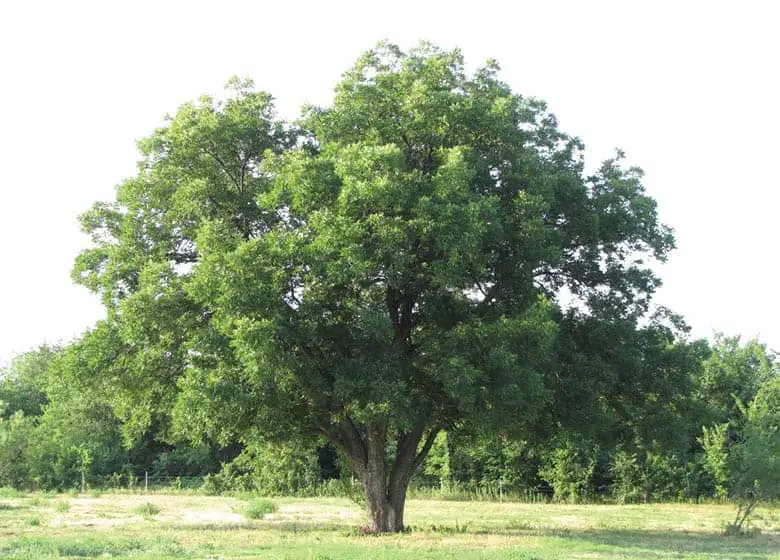
Pecans are another tree that grow really large. A canopy tree for sure. Pecans can be grown in north and central Florida.Pecan trees don’t even mind our sandy soil so they make a great addition to the Florida food forest.
Florida friendly pecan varieties: Cape Fear, Moreland, and Elliot.
Apple
These trees can grow to be about 20-30 feet tall. Apples need about 300-400 chill hours to make fruit. Apples won’t be a very good choice for south Florida gardeners but north and central Florida have a good chance of being able to succesfully grow apples. These trees are best planted during the cooler months, December through February. Apples also need to be cross pollinated to set fruit, this means you will have to plant multiple apple trees in your food forest.
Florida friendly apple varieties: Anna, Dorsett Golden, TropicSweet
Avocado
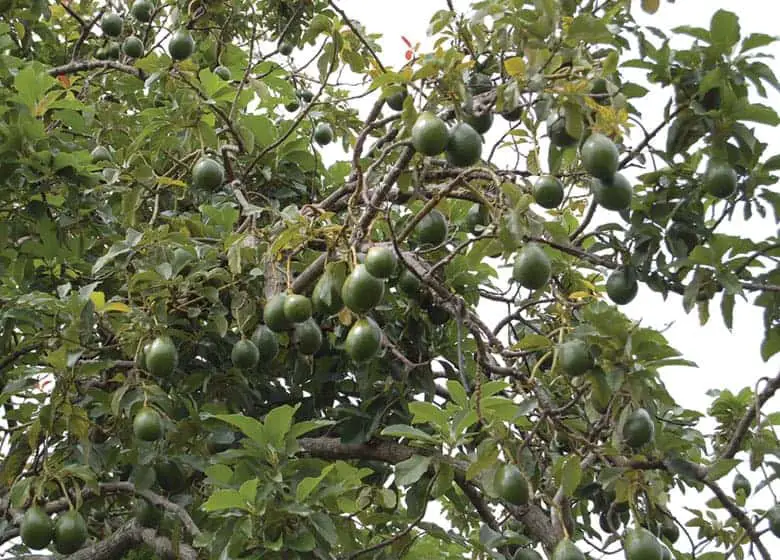
Avocados can grow larger, from 30 – 60 feet tall. They need all the sun so they are a great canopy option. Avocados love the south Florida climate. These trees can not withstand temperatures below 20°F, so north Florida gardeners may have some trouble growing these guys depending on how cold your winters get. Avocado trees ripen at different times depending on which variety you get. Avocados are pretty interesting and diving deep on them requires their own article.
Florida friendly avocado varieties: Bernicker, Brogdon, Choquette, Day, Hall, Lula, Marcus Pumpkin, Mexicola, Monroe, Pollack, Russell, Simmonds, Winter
Fig
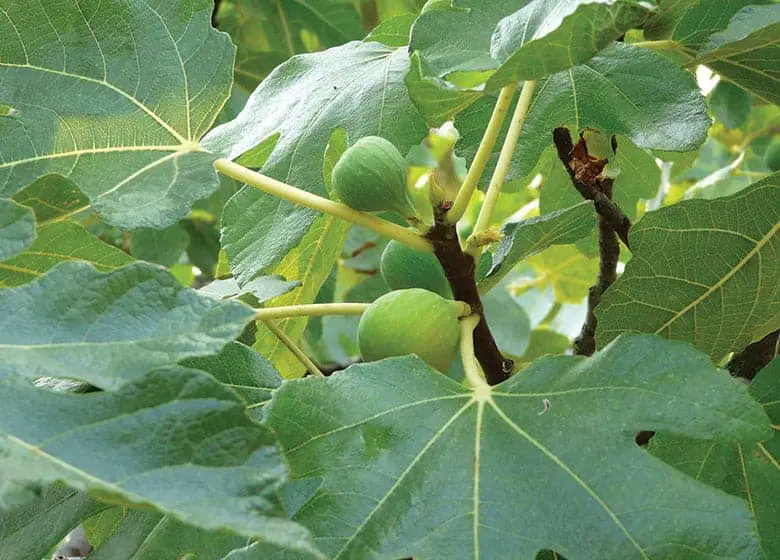
figs can grow up to 12 feet tall and they can get pretty wide as well. They like full to part sun and they don’t like to have their feet wet for a long time. They can be considered part of the canopy layer or low tree layer depending on your design. Figs need about 100 chill hours to make fruit. This wouldn’t be a great option for those further south in Florida.
Florida friendly Fig varieties: Brown Turkey, Celeste, Green Ischisa, Jelly
Loquat
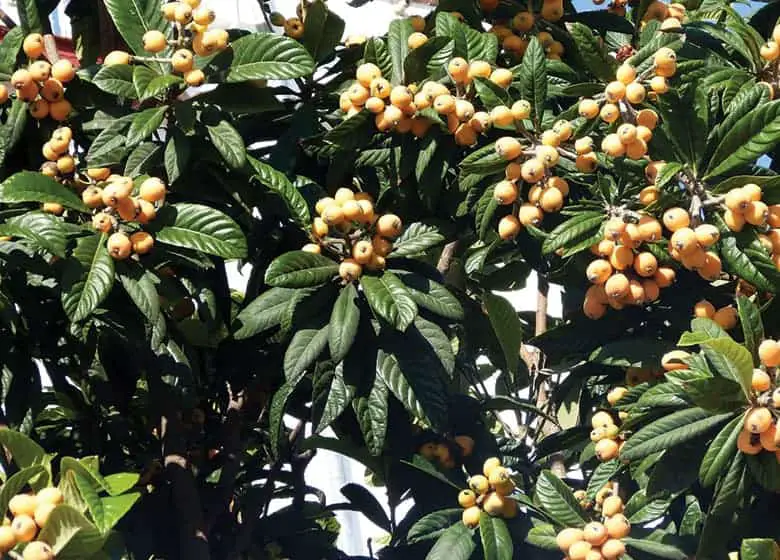
These are beautiful trees that grow stupid easy here in Florida. They have long, dark green leaves and make little edible fruits. They could be a canopy tree or an under story tree depending on your design. They like full sun and you can grow them as a tree up to 20 feet tall. You can also train it like a bush and it will grow up to 15 feet wide(This makes for easier harvesting). They produce a ton of fruit and can be grown in all parts of Florida. These trees are actually used for lots of landscapes around Florida already so they shouldn’t be hard to find at your local nursery.
Florida friendly loquat varieties: Advamce, Champagne, Emanuel, Golitch, Juda, Judith, Oliver, Thales, Thursby, Wolfe
Moringa
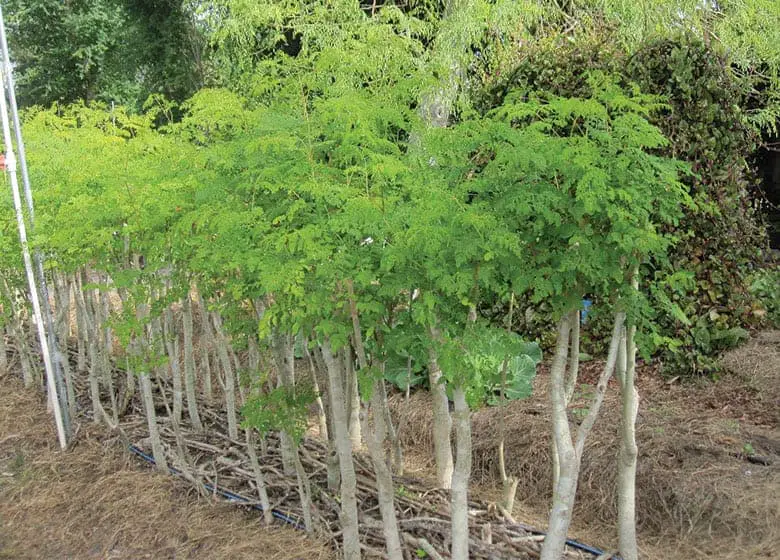
This tree can grow tall and fast. I’m talking like 10 foot a year. However, It’s a good idea to keep the plant moderately tall and use it as a low tree. The leaves are edible and extremely nutritious and growing the tree really tall makes it hard to harvest. This tree will die back during the colder parts of north Florida but it will regrow when it warms up. in south Florida and most parts of central Florida you can grow this year round. This plant may be a little harder to find, You might have to call around to a few different nurseries.
Mulberry
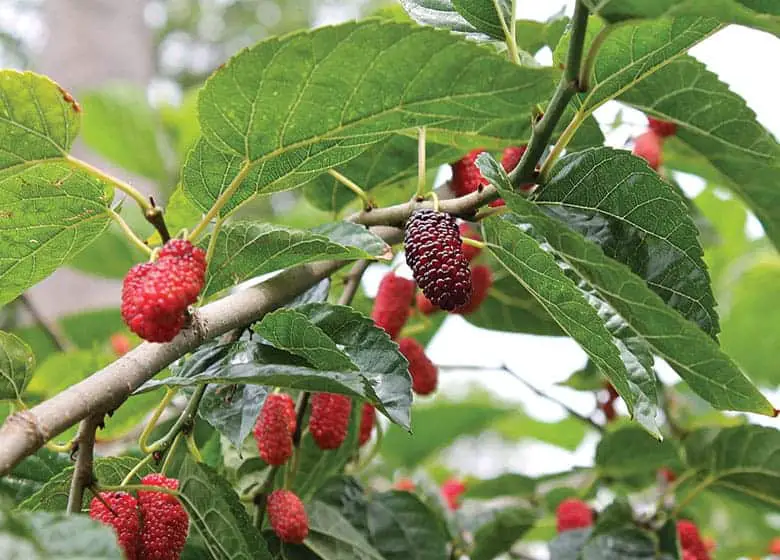
Probably the easiest berry to grow in Florida. This is a tree that can grow in all parts of Florida and produces tons and tons of little berries that resemble blackberries. This tree prefers full sun and depending on the variety you get can range in height from 20 – 60 feet tall fully grown. White mulberry grows the tallest. Red mulberry is native and loves out conditions. it grows quickly and provides good shade and plenty of fruit fast. Black mulberry actually grows more like a shrub than a tree and is said to have the best tasting fruit.
Papaya

Te papaya isn’t best option for providing a ton of shade but it will grow quickly and easily producing tons of fruit. These are definitely tropical trees, they don’t like temperatures below 45ºF. You will probably need more than one plant because you do need to cross pollinate these guys. That is unless you got lucky and got a bisexual plant that self pollinates.
Peach
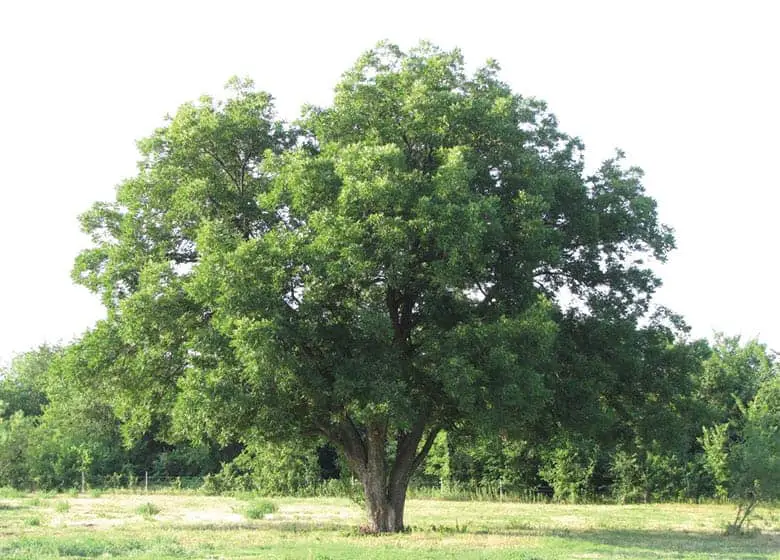
Peach trees can grow to be anywhere between 15-25 feet tall. Peaches can be grown as far south in Florida as Fort Myers thanks to UF producing some low chill hour varieties recently. If you want to dive deeper, I have a whole article on growing peaches in Florida.
Star fruit
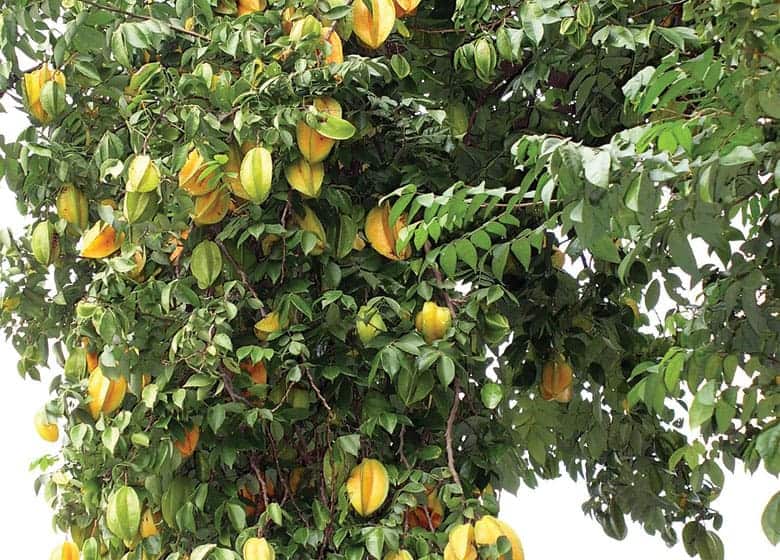
A tropical tree that would grow well in all of south Florida and most parts of central Florida. It can withstand temperatures down to the upper twenties. Star fruit trees, also called Carambolas, are a medium sized tree that can grow between 20-30 feet tall, provide good shade and lots of sweet or tart fruit.
Florida friendly star fruit varieties: Arkins, Dah Pon, Demak, Golden star, Kajang, Kary, Wubuntu
Shrubs
Berries
Berries of all kinds; beautyberry, blackberry, blueberry, mulberry, strawberry and Surinam Cherries. Mulberry was mentioned above as a tree but it trains very well into a shrub also. Surinam cherries are actually the same way, if you want to you can train them into a tree or a shrub.
Cassava
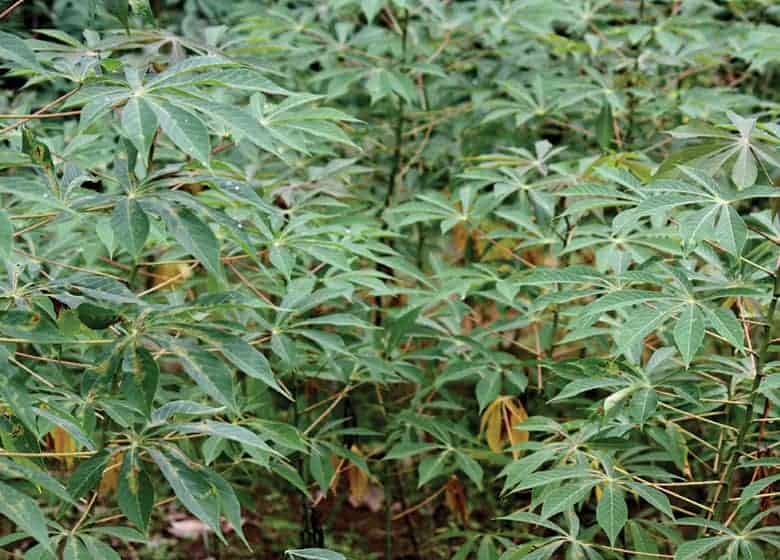
Can also be grown as a small tree. It’s a staple crop in Africa and grows really well in central and south Florida. It can be grown in north Florida but it will get knocked back during the winter time. You can eat the roots and the leaves, however this plant is poisonous to us unless we boil it before we eat it. both the roots and the leaves must be boiled be for eating!
Cassava is not normally started from seeds. It’s super easy to grow from cuttings, which you can odlly enough find plenty of choices to buy from on ebay.
Chaya
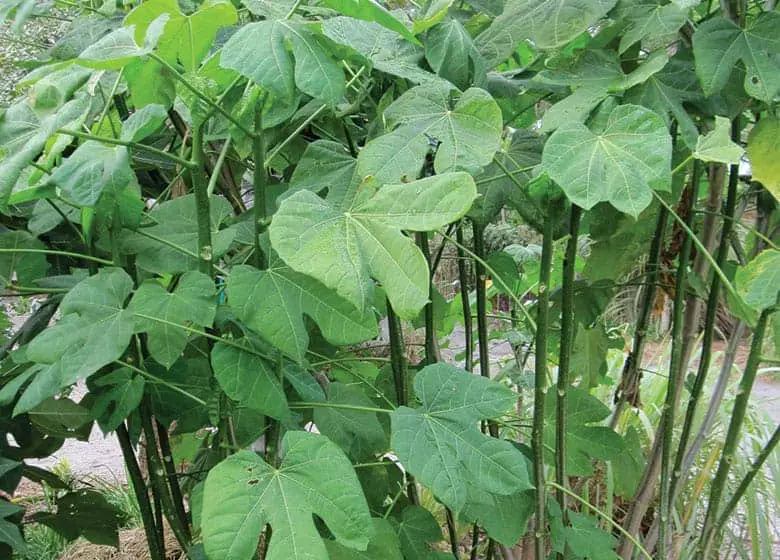
Is in the same family as cassava. This also means it’s poisonous to us if we eat it before we boil it. Chaya is grown for its delicious green leaves. In south and central Florida you can grow this no problem. Northern Florida winters will kill it back but when the weather starts to warm this plant will pop its head back up and start growing again.
It’s easiest to grow Chaya from cuttings as well. You can get your hands on some chaya cuttings here.
Katuk
Katuk can grow in full sun but it also really likes partial shade. When grown in south and central Florida they can grow up to about 10 feet and be a nice thick shrub. In north Florida the frosts will kill it back but it should also grow back. Katuk is used as a green. You can eat the leaves raw or cook them up.
You can get katuk cuttings on Amazon(Check price)
These are best started during the rainy season, they grow wild during our summer months here in Florida.
Prickly Pear
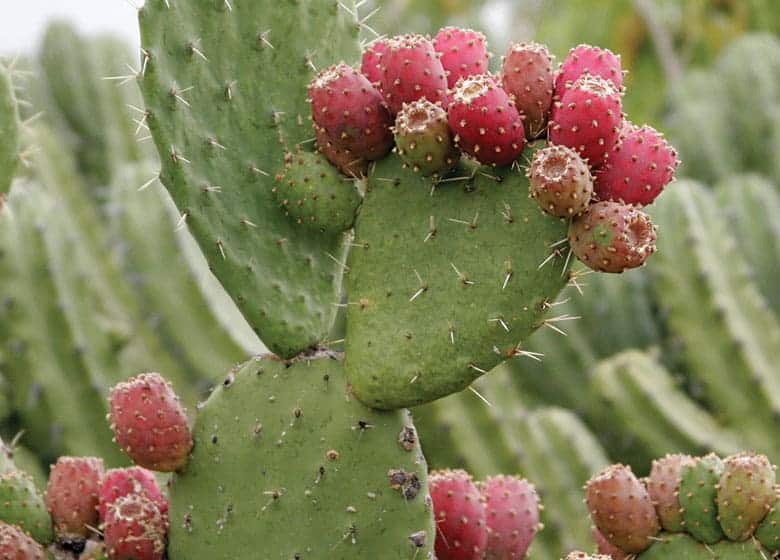
An awesome looking cactus that grows like a shrub. It not only makes nice red and orange flowers but its fruits and “leaves” are edible. It can withstand drought and loves sandy soil. It can take full sun no problem.
The leaves(also called the pads) are best when eaten young.
Rosemary

Rosemary is a great herb for the garden that fills in the shrub layer nicely here in Florida. it is drought tolerant and doesn’t mind our natural soils. It can grow up to 6 feet tall and 5 feet wide.
Tea
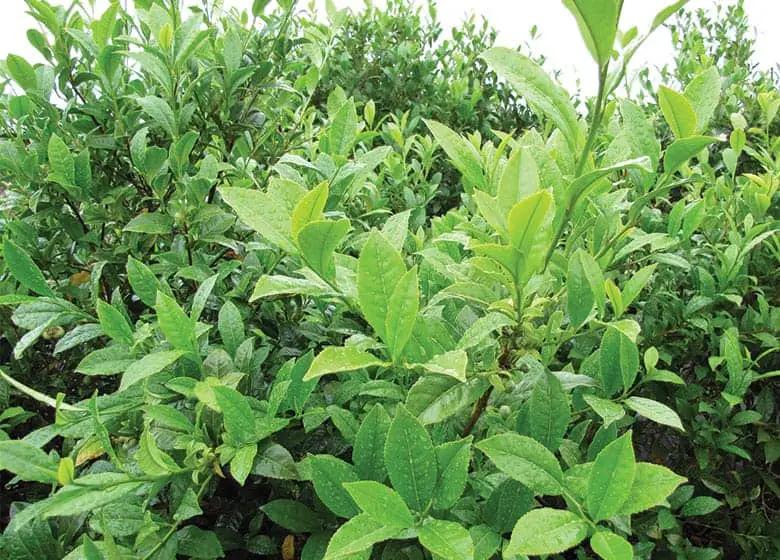
Like the tea that you drink! Florida has a great climate for growing tea. It’s an evergreen shrub but can be trained into a small tree. It’s best grown in light shade but it can take full sun.
The tea plant will survive freezing temperatures and can withstand heat all the way up to 95°F.
It can be grown from seed or cutting.
Herbaceous
Beans

Bush beans are a familiar vegetable crop to many Florida gardeners. They are super easy food source to grow in Florida and they also pump nitrogen back into the soil which helps all plants grow.
I’m clumping a lot of d1ffernt beans together. There are some that vine and some that bush. There are the green bean varieites and also the black eyed pea kinda beans as well.
One thing that they have in common though, is that most beans love full sun.
and because of the different growing habits of all beans they could fill your herbaceous layer, your ground cover layer, or your vining layer.
Florida friendly bush bean varieties: Bush Blue Lake,Contender, Roma II, provider, Cherokee wax, Pinto, Red Kidney, Black Bean, Navy, Garbanzo
Florida friendly pole bean varieties: McCaslan, Kentucky Wonder, Blue Lake
Collards

One of the easiest vegetables I’ve ever grown in Florida. Here in central Florida I can pretty much harvest collards year round. You should start collards pretty much any time of the year except the hottest or coldest months where you are.
Florida friendly collard varieties: Georgia Southern, Yates Strain
Herbs

All of the standard herbs you can think of are great for the berhaceous layer of your Floriuda food forest. Check this out for the 10 easiest herbs to grow in Florida.
Lemon grass
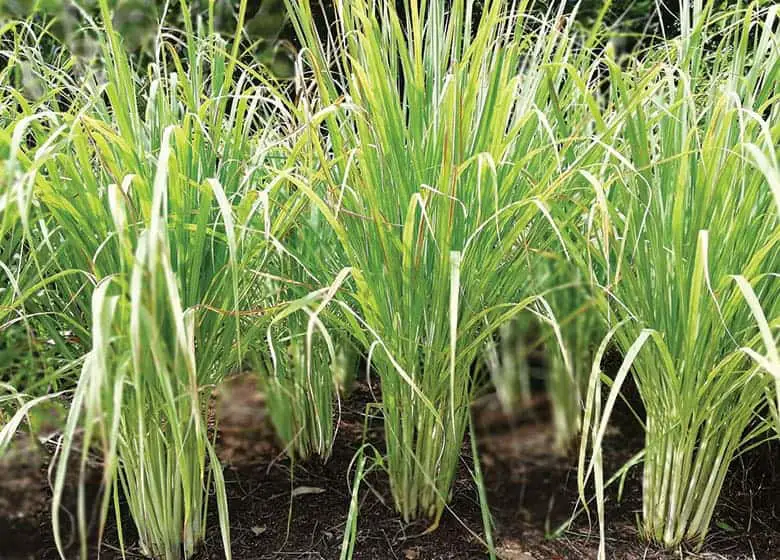
Used in lots of Asian cuisine as a spice it’s an easy top grow herbaceous plant that can get up to 6 feet tall and 3 feet wide. Lemon grass loves the humidity so south Florida and central Florida won’t have a problem growing this year round, In north Florida freeze will kill it back but it will regrow.
Peppers
Another familiar vegetable gardening plant, peppers are pretty easy to grow heer in Florida. Heat and humidity loving plants they can grow to be a couple feet tall and wide. they like full sun.
In north Florida you should plant peppers around August. In central and south Florida you can plant in September and again in March.
Florida friendly sweet pepper varieties:California wonder, Red Knight, Big Bertha, Sweet Banana, Giant Marconi, Cubanelle
Florida friendly hot pepper varieties:Early Jalapeno, Cherry Bomb, Hungarian Hot Wax, Big Chile II, Mariachi, Numex, Ancho, Thai, Anaheim Chile, Long Cayenne, Habanero, Caribbean Red Habanero
Ground cover/Root/Vertical
Ginger
Is a low growing plant, about 2 feet tall. Ginger is so easy to grow here in Florida and its kind of expense in the stores so I don’t know why more people don’t grow it. It likes the shade and doesn’t require much care.
There is an edible ginger and a decortive ginger, make sure yotu get the edible one, Zingiber officinale.
Jerusalem artichoke
This plant is native to north Florida and is sometimes called the sunchoke. They grow to about 6-10 feet tall, the roots are edible and the plants can be chopped and dropped on the soil to help build a healthy environment. The plants will continue to pop back up year after year. If you’re in north and central Florida you will probably have pretty good luck growing these guys but I think it would be difficult to get them going in south Florida.
Malabar spinach
Also called climbing spinach, Its a vine that grows large green leaves and climbs up trellises or other trees or near by bushes. If you want you can pick off the new leaves and keep it as a smaller shrub type plantor let it grow wild. It loves heat and humidity as well and will flourish in south Florida. You can grow it in central and north Florida but it will struggle during the winter months.
Mint
If you’ve ever talked to anybody that has grown mint in the same containers as other herbs I bet they will all tell you the same thing. Mint has the ability to take over a space. Mint is a low maintenance option for the food forest. It will grow like crazy over a newly planted food forest which is fine. Its an edible ground cover that doesn’t require much care. It’s protecting the soil from the sun which is exactly what we want.
Passion fruit
Is a vine that can grow up to 40 feet long. You can plant already grown plants from the nursery at any time in lower central and southern Florida.
Seminole squash
A vining plant that can grow up your tall trees or lay on the ground and act as a ground cover. They grow crazy easy here and can take our summer heat in central and south Florida, which not all plants can say. They are pretty much care free once they get situated.
Sweet potato
Probably the easiest vegetable I have ever grown. In fact I’ve had a hard time getting it out of my raised bed garden. It completely covered my 4’x12′ garden and I only transplants 8 little plants. Which Actually worked great with what I was growing with it. It acted like a living mulch. The best times in Florida to start these are march through June. They enjoy the warm months in all parts of Florida.
Florida friendly varieties: Beauregard, Hernandez, Picodito
What is a Food Forest?
A food forest is built of seven layers.
- Canopy layer
- Low tree layer
- Shrub layer
- Herbaceous layer
- root crop layer
- Ground cover
- Vining layer
Have you ever taken the time to look at the way plants naturally grows when you’re on a walk? Forests may look like a big ol jumbled mess but they actually grow in patterns. To make a successful food forest you don’t need every single layer but a combination of a few of these layers sets you up for success.
All of the plants in a successful food forest are there for a reason and have a healthy relationship with the other plants.
Just like nature though food forests can also look like a jumbled mess. Food forests are not trees planted in little happy rows, That’s not how things normally grow.
Your food forest doesn’t have to look like an unmanagaed mess but a lot of times it does. A successful food forest is not judged based on how it looks.
A successful food forest is one that sustains itself and you!
Layers Of A Food Forest
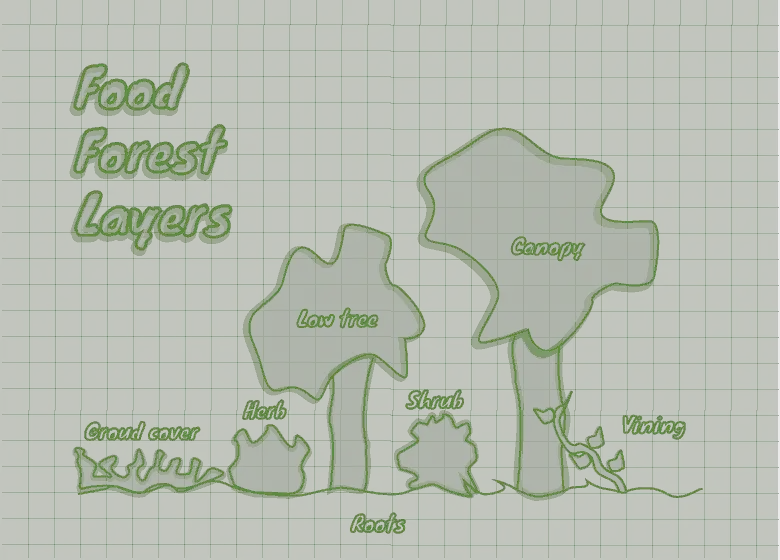
The canopy layer
This layer is made up of the tallest trees in your food forest. The trees that are the tallest will obviously change based on how much size you are working with. If you have some space to work with, your trees can be vary tall like the Live Oak trees we have all around north and central Florida. But if you’re only working with a small backyard, something like a loquat or bananas might be your canopy layer.
Low Tree Layer
These are trees that are smaller than your tallest trees. They like the support the bigger tree gives them. Depending on how big your canopy layer is, they could be things like apples, Figs or mulberries.This layer is usually full of food. Fruits, nuts and berries!
Shrub Layer
This layer is useful for nitrogen fixing plants, beneficial bug attractors, and some food. this gets tucked in and around your two tree layers. These could be things like cassava or blueberries.
Herbacious Layer
This is where you can get lots of herbs or veggies planted. These get tucked into any space that you have left. Seriously cram this stuff in there. Things like basil, ginger, and longevity spinach are perfect for this layer.
Root Crop Layer
Lots of things that you can plant as your ” herbaceous layer” are also part of your root crop layer. Things like carrots count as both. Sweet potatoes are a root layer crop but also a ground cover and a vine! So there is some flexibility to all of these layers.
Ground Cover Layer
The ground cover layer really helps protect the ground. It acts as a living mulch and helps the sandy Florida soil stay protected from the hot sun. Sweet potatoes and mint are super easy options to grow as your ground cover.
Vining Layer
This layer creeps up and grows on your trees , shrubs and any other support you provide. This layer maximizes space. A vining layer could be grapes, passion fruit or the versatile sweet potato again!
Prepare Your Site
I would suggest starting small , like I’m going to do. When i started gardening I wanted to grow everything but I quickly realized that I was in over my head.
Clearing your land of all the grass and weeds that are currently there is the first step to preparing your site for a food forest. Of course, if there is something that you want to keep already growing there you should leave it.
The most important thing you can do after clearing your site is to lay down mulch.
Contact your county extension office and see if there is any place near you that you can get mulch from. You can also try contacting local tree companies in your area, I bet lots of them are willing to drop off loads of wood chips to you for free.
Clearing and protecting your soil is what we are going for right now.
How To Plan A Food Forest
Forests are very bio diverse. Natural forests around the earth only cover 6% of its total land but are home to over 50% of the species on the plant.
When planing a food forest you need to think in terms of layers.
Forests don’t grow in straight lines. things are usually growing all around each other.
This only becomes a problem when there is something growing that is killing the other things growing. When planing your food forest you want to make sure that each plant will work together instead of fighting each other for sunlight, root space, nutrients and water.
If you notice an issue starting to happen, you have the power to remove a plant or chop one down. You are building this forest and working with nature to optimize it’s production.
Not only do you have to think of which plants are best for you, but you also have to analyze the space you are working with.
If you’re like me and its just a backyard, Start paying attention to where the sun falls and how it moves with the seasons. Which parts of your yard get the most sun and which parts of your yard get the least?
Does your yard slope at all? and does water collect anywhere?
These are all things of importance when surveying your work space.
Now that you know the lay of your land and have your soil prepared it’s time to plan what plants you want to put where.
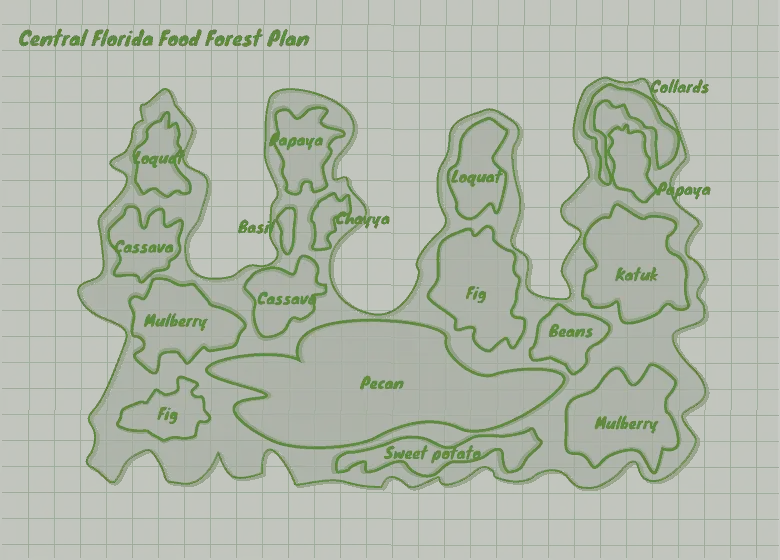
What Is A Fruit Tree Guild?
This is basically a pairing of a few plants that work together to build the different layers of the food forest. Not all of the layers need to be accounted for every time but having at least three of the layers occupied by plants makes a good combo.
A big tree, some shrubs, some vines and a ground cover and you’ve got yourself a fruit tree guild.
So, what are some of the best Florida food forest plant pairings?
Common Fruit Tree Guilds For Florida
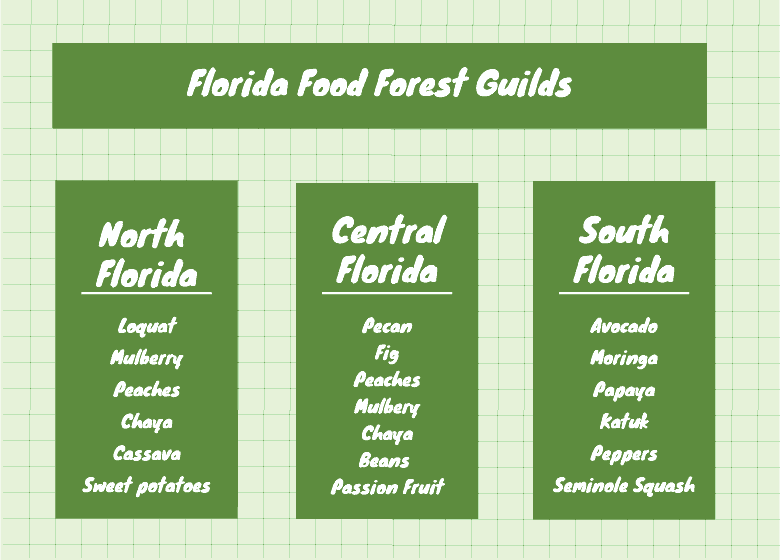
Benefits Of A Food Forest
- No pesticides. IF you plant lots and lots of things together and attract lots of bugs, your ods are that you won’t have to use pesticides. More often than not, bugs are good for the garden. there are only a handful of pests that actually attack your garden.
- No on going input. You put all the work in designing and then planting the forest but after that there is minimal up keep. You arent going to be wasting your energy every week in the summer mowing or weed eating when you have a food forest.
- Food. Probably the biggest and most obvious benefit to a food forest.
Resources:
If you haven’t heard of David the good, check him out here on Youtube
He he also has a book out right now called Creat Your Own Florida Food Forest which you can get on Amazon.
Robert Bowden has a great book called Florida Fruit & Vegetable Gardening with lots of info about fruit trees and varieties that grow best in Florida.
